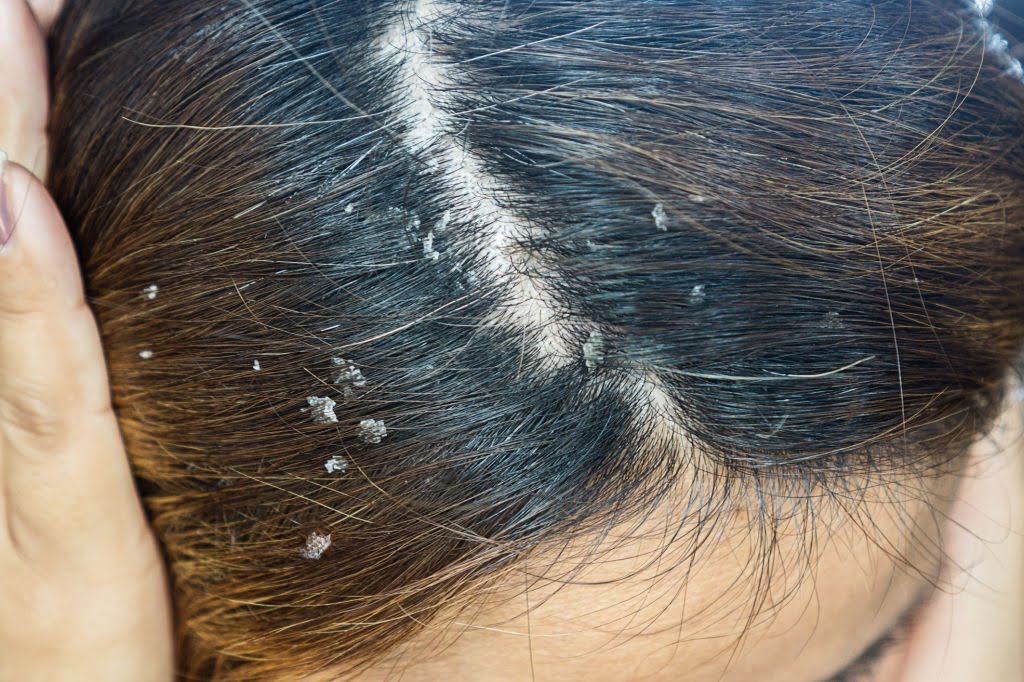Seborrheic dermatitis is not harmful to the body or hair. It manifests itself as red, dry, flaky, and itchy skin on the scalp and other areas of the body. It is common but not contagious. Its presence does not indicate that the skin is dirty or sick. Easily available medications are used to treat the symptoms.
What is seborrheic dermatitis?
Seborrheic dermatitis is a widespread, non-infectious, and easily treatable skin disorder.
Seborrheic dermatitis can manifest itself in various parts of the body.
Seborrheic dermatitis is a chronic disorder that manifests, resolves with treatment, and recurs on occasion.
Seborrheic dermatitis is diagnosed in a variety of ways.
Seborrheic dermatitis is a relatively simple ailment to diagnose due to the appearance of the affected skin and its location on the body. There is no requirement for blood, urine, or allergy testing. If your problem does not improve with treatment, your dermatologist may do a skin biopsy to rule out other disorders.

What symptoms does seborrheic dermatitis present with?
- On your scalp, itchy white flakes of skin (dandruff). When scratched, the flakes get detached and fall into your hair or onto your neck and shoulders.
- Your skin is covered in red scales.
- Scales of rusty yellow on infants’ heads (cradle cap). While cradle cap should not itch, rubbing the region may aggravate the inflammation and damage the skin, resulting in bleeding or minor infections.
- Acute blepharitis (scaly redness on the edges of your eyelids).
- Scales in pinkish plaques (thick skin) on both sides of your face.
- Flaky patches looking like a flower petal or a ring appear on your breast and hairline.
- Redness in the vaginal folds and wrinkles, armpits, and beneath the breasts.
- On your cheekbones and top half of your trunk, inflamed hair follicles.
What causes seborrheic dermatitis?
The specific cause of seborrheic dermatitis is unknown. They believe there could be numerous factors. Several factors are believed to play a role, including the following:
- Malassezia is a form of yeast that is found on everyone’s skin but grows excessively in some people.
- Increased androgen levels (a hormone).
- An increase in the amount of lipids in the skin.
- A pro-inflammatory response.
- Ancestral history (dermatitis runs in the family).
Other variables that contribute to the development or aggravation of seborrheic dermatitis include the following:
- Stress.
- Climate is cold and dry.
- Skin that is oily.
- Using lotions containing alcohol.

What is the treatment for seborrheic dermatitis?
Seborrheic dermatitis does not normally resolve on its own in adolescents and adults. The type of treatment is determined by the affected area of the body and the severity of your ailment.
The treatment objective is to alleviate the apparent indications of seborrheic dermatitis, such as itching and redness. Treatment may include both over-the-counter and prescription medications. Frequently, ongoing maintenance therapy is required. You may require a combination of the following treatments:
How to cure seborrheic dermatitis?
Seborrheic dermatitis treatment: Infants
Cradle cap typically resolves on its own between the ages of eight and twelve months. Daily treatment with a Seborrheic dermatitis shampoo is recommended.
Massage many times a day and after each Seborrheic dermatitis shampoo bath.
If the problem persists or if the baby appears to be in pain and scratches his or her scalp, consult a pediatrician or dermatologist. He or she may prescribe a specially formulated shampoo or lotion.
Additional afflicted regions of skin may be treated with a mild steroid lotion.
Seborrheic dermatitis treatment: Adults
Consider over-the-counter dandruff shampoos that contain selenium, zinc pyrithione, or coal tar for mild cases. Shampoo with it twice weekly or as suggested on the product’s packaging. Your healthcare practitioner may prescribe antifungal shampoos containing ciclopirox (Loprox®) or ketoconazole (Nizoral®) for long-term management. These shampoos are used daily to twice or three times a week for several weeks to eliminate dandruff, then once or twice a week to prevent flare-ups. Your healthcare professional will provide you with precise usage instructions.
How can I minimize my chance of developing seborrheic dermatitis?
Preventing seborrheic dermatitis is difficult. Cradle cap is a completely innocuous condition that occurs naturally. It is easily treatable at home.
Simple healthy habits like getting enough sleep, managing your emotional stress, and obtaining a daily small dose (minutes) of sunshine all help to minimize your risk (UV light). Avoid the noon sun.
Always follow the directions provided by your healthcare practitioner while using medicated shampoos and skin products. Inadequate or delayed treatment can result in recurrences of your ailment and subsequent visits to your healthcare practitioner.

How do I look after myself?
If you have seborrheic dermatitis scalp, you can try these over-the-counter dandruff shampoos. If a shampoo does not work, examine the active component and switch to a new product that contains a different active ingredient (see treatment section). Shampoos should be left on the scalp for a minimum of five minutes before rinsing to help reduce seborrheic dermatitis scalp.
Consult your healthcare practitioner or dermatologist if you suspect you have seborrheic dermatitis on your face or body. They will conduct an examination to ascertain the scope and severity of your problem. You and your doctor will collaborate to determine the optimal treatment strategy for resolving your illness and managing flare-ups. Always follow all directions and contact your healthcare practitioner if you have any questions or concerns.
FAQs
Is seborrheic dermatitis contagious?
Seborrheic dermatitis develops as a skin condition that is not contagious. It results in scaly patches of skin covered in oily, dandruff-like flakes, most prominent on the face and scalp.

